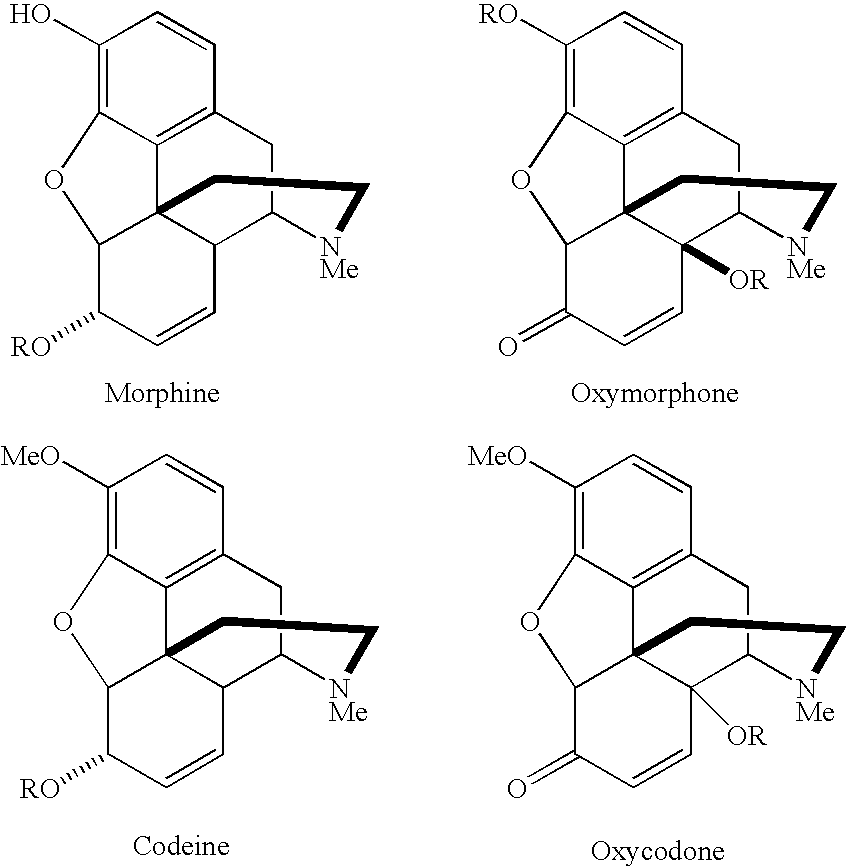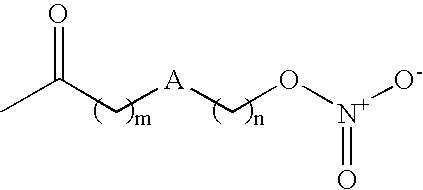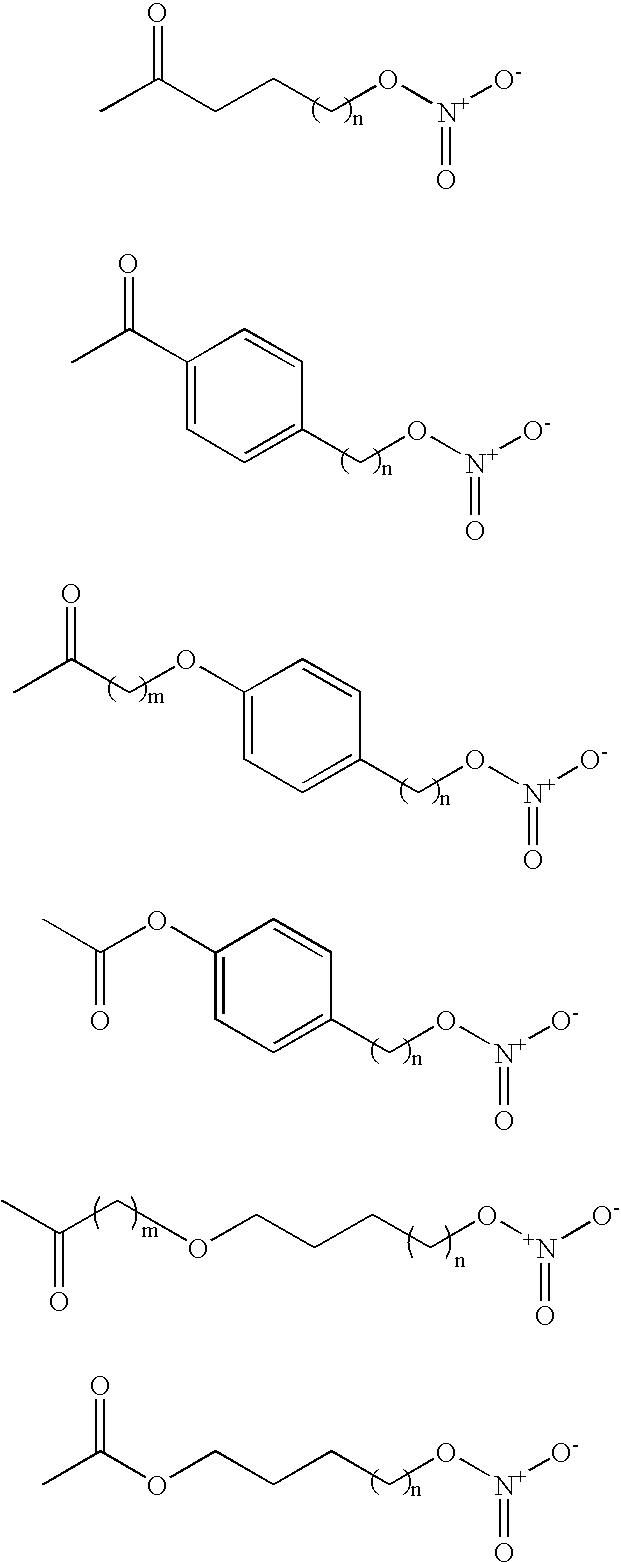Compositions and methods of using them
- Summary
- Abstract
- Description
- Claims
- Application Information
AI Technical Summary
Benefits of technology
Problems solved by technology
Method used
Image
Examples
example 1
[0083] Assessment of Temporal Antinociceptive Potency of .mu.-Opioid Receptor Agonists in STZ Diabetic Rats
[0084] Materials and Methods
[0085] Jugular Vein Cannulation and Diabetes Induction
[0086] Deep and stable anaesthesia was induced with a mixture of ketamine (100 mg / kg, i.p.) and xylazine (16 mg / kg, i.p.) to facilitate insertion of a polyethylene cannula (previously filled with 0.1 ml of sterile saline) into the right common jugular vein. Jugular vein cannulae were tested for correct placement by the withdrawal of a small amount of blood. Diabetes was induced following an acute i.v. injection of streptozotocin (STZ) (85 mg / kg) in 0.1 M citrate buffer (pH 4.5) into the jugular vein.
[0087] Diabetes was confirmed by monitoring the water intake and blood glucose concentration in individual rats. For the acute study, blood glucose was monitored using either (Glucostix.TM.) or a Precision QID.TM. test kit.
[0088] Consistent with the accepted standard protocol in the art, rats that dran...
example 2
[0121] L-Arginine Restores the Antinociceptive Potency of Opioid-Receptor Agonists in PDN
[0122] Materials and Methods
[0123] Study Design, L-Arginine Administration and Opioid Dosing Regimens:
[0124] This study comprised three groups of STZ-diabetic DA rats: STZ-diabetic DA rats in Group 1 (n=25, 256.+-.3.6 g, mean.+-.SEM) were studied serially over a 6-month period such that individual rats received (i) one of three bolus s.c. doses of either morphine or oxycodone to produce dose-response curves at 9, 12 and 24 wks post-STZ administration, or (ii) an ED.sub.50 dose of morphine and / or oxycodone at 16 and 20 wks post-STZ administration. For each testing session, rats received single s.c. doses of either morphine or oxycodone on two or three occasions in a cross-over design, with four complete days of washout between doses. At 9 wks post-STZ administration, Group 1 STZ-diabetic rats received a dietary intervention of an L-arginine supplement (1 g per day) incorporated into rat chow, unt...
example 3
[0184] Preparation of Morphine-Nitric Oxide Conjugate 1
[0185] Morphine 1
[0186] Morphine hydrochloride trihydrate (1.5 g) was dissolved in the minimum amount of water (RO type) (.about.20 mL) and to this was added enough saturated sodium hydrogen carbonate to precipitate morphine. Morphine 1 was collected by vacuum filtration and washed with distilled water (20 mL) followed by small amounts of cold diethyl ether (5 mL). The white solid, protected from light with aluminium foil, was placed under high vacuum (0.01 mmHg) for 3 h.
[0187] 5-Nitratovaleric Acid 2
[0188] The titled compound was prepared following the procedure of EP 0 984 012 A2 (K. M. Lundy, M. T. Clark). Briefly, silver nitrate (23.48 g, 0.153 mol) was pre-dried under high vacuum (0.01 mmHg) and subsequently dissolved in anhydrous acetonitrile (70 mL) under an argon atmosphere. The solution was warmed to 50.degree. C. and 5-bromovaleric acid (5 g, 0.028 mol) [dissolved in anhydrous acetonitrile (3 mL)] added quickly via syr...
PUM
| Property | Measurement | Unit |
|---|---|---|
| Dimensionless property | aaaaa | aaaaa |
| Dimensionless property | aaaaa | aaaaa |
| Dimensionless property | aaaaa | aaaaa |
Abstract
Description
Claims
Application Information
 Login to View More
Login to View More - R&D
- Intellectual Property
- Life Sciences
- Materials
- Tech Scout
- Unparalleled Data Quality
- Higher Quality Content
- 60% Fewer Hallucinations
Browse by: Latest US Patents, China's latest patents, Technical Efficacy Thesaurus, Application Domain, Technology Topic, Popular Technical Reports.
© 2025 PatSnap. All rights reserved.Legal|Privacy policy|Modern Slavery Act Transparency Statement|Sitemap|About US| Contact US: help@patsnap.com



